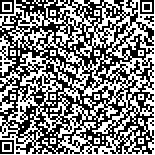| 摘要: |
| 实验生态条件下研究十溴联苯醚(BDE-209)的急性毒性胁迫对褶皱臂尾轮虫(Branchionus plicatilis)运动行为与摄食行为的影响, 探讨可用以表征胁迫-响应的生物标志物。结果表明:(1) BDE-209胁迫24h显著性增加了褶皱臂尾轮虫的运动抑制率, 由此得到24h半数有效抑制浓度(24h-EC50)为9.084mg/L, 但未达到半数致死作用;(2) 当分别以四种海洋微藻: 小球藻(Chlorella vulgaris)、青岛大扁藻(Platymonas helgolandica)、等鞭金藻8701(Isochrysis galbana)和小新月菱形藻(Cylindrotheca closterium)为单一饵料来源时, 褶皱臂尾轮虫对四种饵料单胞藻的滤水率(F)和摄食率(G)均随着胁迫时间和胁迫浓度的增加而不断下降, 呈现出明显的浓度依赖性, 说明BDE-209胁迫能显著抑制褶皱臂尾轮虫的摄食作用。(3) 将其中三种微藻等生物量混合投喂时, 褶皱臂尾轮虫对三种微藻的滤水率和摄食率与单一饵料投喂条件相比均发生变化, 且对各种微藻的选食率(Sr)和摄食总生物量均随着胁迫时间和浓度的增加呈下降趋势, 选择性指数(Si)发生变化, 对小球藻的摄食选择性最高。滤水率的变化较其它指标更敏感, 可用以指示浮游动物在个体水平上响应外源环境变化的标志物。结果表明, BDE-209胁迫能有效改变褶皱臂尾轮虫的摄食与选食行为, 且其最适宜的饵料是小球藻。 |
| 关键词: BDE-209 褶皱臂尾轮虫 饵料微藻 急性毒性 摄食 选食 |
| DOI:10.11693/hyhz20150500152 |
| 分类号: |
| 基金项目:国家自然科学基金项目, 41276140号, 41476109号; 国家自然科学基金-山东省联合基金项目, U1406403。 |
|
| ACUTE TOXIC EFFECT OF BDE-209 ON FEEDING BEHAVIOR OF ROTIFER BRACHIONUS PLICATILIS |
|
CHEN Hong-Mei, TANG Xue-Xi, FANG Kuan, WANG You
|
|
College of Marine Life Sciences, Ocean University of China, Qingdao 266003, China
|
| Abstract: |
| Under controlled laboratory conditions, the acute toxic effect of high brominated Deca-BDE (BDE-209) on Brachionus plicatilis and the response of feeding behavior to the stress were studied. Experiment was designed at five concentrations of BDE-209 (2, 6, 10, 14, and 18mg/L) against a blank and a control groups in triplication. The results indicated that: (1) BDE-209 significantly inhibited the motile behavior of B. plicatilis and the 24 h-EC50 was 9.084mg/L, but the half lethal effects were not observed; (2) When four species of marine microalgae bait: Chlorella vulgaris, Platymonas helgolandica, Isochrysis galbana, and Cylindrotheca closterium were fed as the single food source, the filtering rate (F) and the feeding rate (G) of B. plicatilis decreased obviously as the increase of BDE-209 concentrations and exposure time, exhibiting a does-dependent manner, which indicated the feeding behavior of B. plicatilis was significantly inhibited by BDE-209; (3) when C. vulgaris, P. helgolandica, and I. Galbana were fed to B. plicatilis together as mixed food, the values of F, G, feeding selectivity ratio (Sr) and total biomass of B. plicatilis decrsased obviously in the same manner, and the food selectivity index (Si) changed simultaneously. C. vulgaris was the optimal food source for B. plicatilis with and without BDE-209 exposure. Moreover, the filtering rate was the most sensitive parameter to the stress and could be used as an indicator of zooplankton to the changes of ambient environment. We concluded that the stress of BDE-209 significantly changed the feeding and selecting behavior of B. plicatilis, and the optimal food source for it was C. vulgaris. |
| Key words: BDE-209 Brachionus plicatilis bait marine microalgae acute toxicity feeding activity feeding selectivity |
